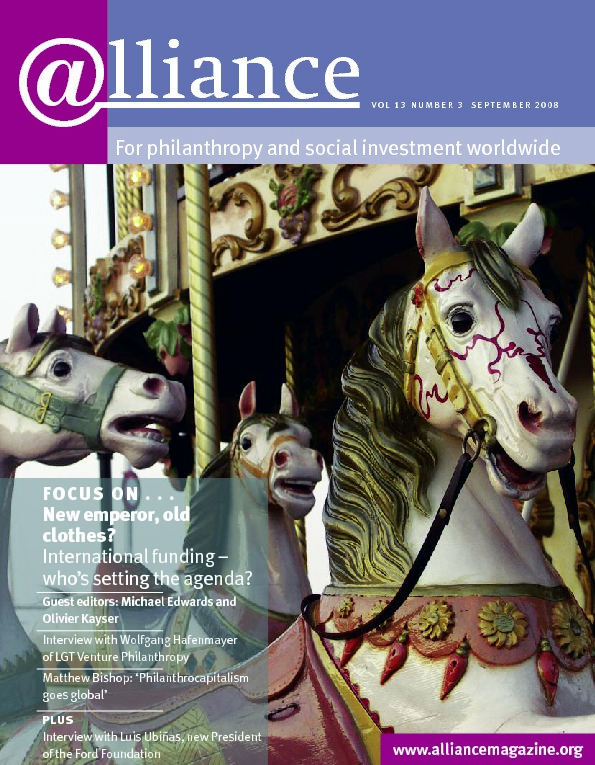We know that convenience is a major factor in the use of financial services, don’t we? At least that’s the assumption of many funders and implementers who are working to make financial services more convenient for those living on under $2 a day. The lack of convenient savings opportunities is often assumed to be one of the major reasons for the low levels of savings among poor people – many of whom express both capability and desire to save in surveys. After all, convenience seems to drive a lot of savings behaviour in developed countries.
Most of the people around the world living on under $2 a day don’t have access to a trustworthy bank or microfinance institution that offers savings accounts. For those who do have access to a savings account, the account might seem unattractive from a developed country perspective: interest rates are low and withdrawals are limited. Many philanthropists and NGOs assume that if more convenient savings products were offered, more of the poor would begin saving. Green Bank of Caraga, Philippines and Innovations for Poverty Action teamed up to learn more about what savings products the poor want and would use. We discovered, surprisingly, that what many potential savers among the poor want isn’t convenience but inconvenience.
Through a series of surveys and small tests, we struck upon a new savings approach for the Philippines: a ‘commitment savings product’. A commitment savings product limits what the saver can do, specifically when and how much they can withdraw from the account. In this case, the client got to choose their inconvenience: either no funds could be withdrawn until a specific date (set by the client) or no funds could be withdrawn until the account balance reached a predetermined amount (again set by the client).
To test whether this kind of savings account would be both interesting (clients would open an account) and useful (clients would save more in an account like this than in a ‘normal’ savings account), we designed a randomized controlled trial. We randomly divided the just over 4,000 clients of the bank into three groups. One group would be given a ‘sales pitch’ on the benefits of savings and offered a commitment savings product; the second group would get the pitch but not be offered the commitment savings account; and the third would get neither the sales pitch nor the product. This design allowed us to test whether it was the product or the marketing that made a difference, if there was one.
And there was quite a difference. Compared to the third group (the control), those who got only the sales pitch didn’t save much more. But those who had been offered and opened a commitment savings account had increased savings at six months by 192 per cent and at 12 months by 337 per cent.
So what’s going on here? Based on our survey work with clients after a year had passed, we learned that many clients valued the inconvenience of the product. For them, it wasn’t putting the money aside that was a problem, it was leaving it aside. Once they had a product that would help them keep the money out of reach, they took advantage of it. Overall, the accounts were most popular with clients who claimed they had self-control problems – a group that is difficult to help with other interventions.
On the other hand, inconvenience isn’t a cure all. Forty per cent of the people who opened an account when it was first offered never made another deposit (which makes the gains in savings across the whole group even more impressive). For some of these clients that didn’t follow through, another type of inconvenience was a problem: the bank was too far away to pay a visit to make a deposit. For others, it remained difficult to put any extra funds aside despite their best intentions.
So what did we learn? Inconvenient savings products can play a powerful role in helping the poor save more. Of course, not everyone wants inconvenience, but enough do that we should revise our assumptions about what products will work best.
Dean Karlan is President, Innovations for Poverty Action, and Professor of Economics, Yale University. Email dean.karlan@yale.edu
Chona Echavez is Senior Research Associate, Research Institute for Mindanao Culture (RIMCU).
Email
About this column
No battle plan survives first contact with the enemy and no intervention survives first contact with human beings. People rarely respond to programmes the way we expect them to; despite theories of change and strategic plans, we too often forget to re-examine the assumptions that underpin our plans. Beginning in this issue of Alliance, a regular column will focus on the sometimes surprising conclusions of experiments designed to test common philanthropic assumptions. In conjunction with Innovations for Poverty Action, a US-based research and policy organization, and their partners from around the world, we hope to challenge you to think again.





Comments (0)